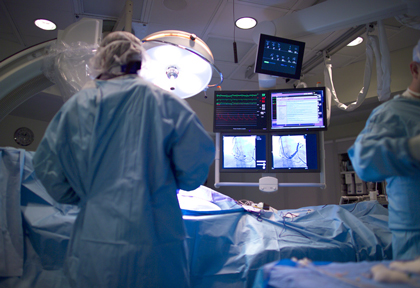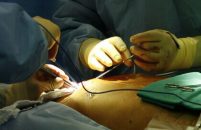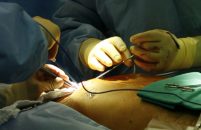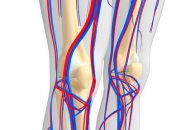Angina persistence or recurrence after PCI can affect between 20 to 40% of patients in the short and mid-term. This might be true despite PCI optimization using FFR, intravascular ultrasound and the latest generation stents. This problem is associated with high healthcare cost, which can double in patients with recurrent or persistent angina compared against…
Outcomes of MAIN-COMPARE: A 10-Year Follow-Up for a Historical Rivalry
Angioplasty and myocardial revascularization surgery have competed over the left main coronary artery for a long time. There may be many points of view involved in the interpretation of trial outcomes. While surgeons consider the left main coronary artery to be suitable for surgery (except when faced with surgical contraindications), interventional cardiologists see the left…
The “Ten Commandments” of Myocardial Revascularization According to Europe
The new European guidelines on myocardial revascularization were developed by a joint effort of the European Society of Cardiology (ESC) and the European Association of Cardiovascular Surgery (EACTS). These guidelines are intended to support clinical practice with pragmatic recommendations based on currently available evidence and on personal experience, whenever evidence is missing. Both coronary angioplasty…
AHA 2018 | Freedom Long-Term Follow-up: Still in Favor of CABG
Nearly 8 years later, CABG maintains its benefit over PCI-DES in terms of mortality in diabetic patients with multivessel disease, according to the Freedom trial, presented by Dr. Fuster at AHA and simultaneously published in JACC. CABG is superior to PCI-DES, with 36% higher mortality in these last years. Considering the nature of atherosclerosis,…
Stroke Rate after CABG vs PCI in over 10,000 Patients
Repeat revascularization rate has historically been the weak spot of PCI when compared against CABG: we are still unable to compete with a well done internal mammary artery graft connected to the anterior descending artery. However, repeat revascularization is the soft of end points commonly assessed in trials, and even though several studies have shown…
What Is the Prognosis for Reinterventions in Critical Lower Limb Ischemia?
Infrapopliteal (below the knee, BTK) percutaneous transluminal angioplasty (PTA) has been acknowledged as a useful strategy in chronic critical limb ischemia (CLI), but artery calcification severity results in considerable restenosis. Repeat PTA and the management of trophic lesions help with wound healing. However, this conduct has not been extensively assessed. This study enrolled 152 patients (175 limbs)…
Does a Combination of Diabetes and Acute Coronary Syndrome Change the Revascularization Strategy?
The results of the FREEDOM (Future Revascularization Evaluation in Patients With Diabetes Mellitus: Optimal Management of Multi-vessel Disease) trial have shown a lower rate of events in patients with diabetes and stable multivessel disease who were randomized to undergo myocardial revascularization surgery, compared to those who underwent angioplasty. Surgery even showed a mortality reduction that…
7 articles on angioplasty that can draw your attention
1) Balloon Angioplasty: A Reasonable Plan B for Chronic Thromboembolic Hypertension Thromboembolic pulmonary hypertension is caused by pulmonary artery stenosis caused by organized thrombi. The only treatment potentially healing for this disease is surgical thrombectomy. However, patients with lesions in very peripheral branches or high surgical risk patients with comorbidities might benefit from a plan B,…
Excellent Outcomes for the First Sirolimus Eluting Balloon Tested on Instent Restesosis
Much has been done since studies on conventional balloon angioplasty for BMS instent restenosis showed over 40% new revascularization. Drug eluting stents, aimed at improving this problem, have never achieved 0% restenosis, which is why technologies such as paclitaxel coated balloons have been developed, with reasonable efficacy (8% to 10% reinterventions rate for BMS restenosis and 17% to 23%…
Impella Improves Safety in High Risk Unprotected Left Main PCI
Courtesy of Dr. Carlos Fava. The incidence of unprotected left main severe stenosis ranges between 4 and 8%, and it’s mostly associated with multivessel disease. The use of left ventricular support devices in high risk unprotected left main PCI is on the rise, but not much information available in this regard. Read also: “Prior assistance…









